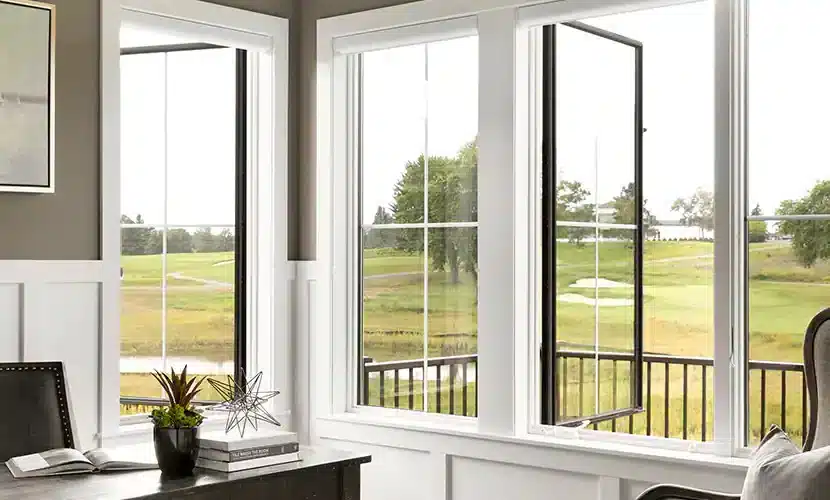Casement windows have become increasingly popular in both residential and commercial buildings due to their aesthetic appeal and functionality. These windows provide excellent ventilation and are known for their energy efficiency. Casement windows are hinged at the side and open outward, allowing for maximum airflow and unobstructed views.
Understanding Casement Window Sizes
Casement window sizes refer to the dimensions of the window frame, including the width and height. Standard casement window sizes are predetermined measurements that are widely available in the market. The width of casement windows typically ranges from 1 to 2 feet, while the height can vary from 2 to 6 feet.
Benefits of choosing standard casement window sizes
Opting for standard casement window sizes offers several advantages.
Easy Selection: Standard sizes are readily available, making the selection process quicker and more convenient.
Cost effective: Standard sizes are often more cost effective compared to custom made options.
Aesthetic appeal: Standard casement window sizes also provide a sense of uniformity, especially in residential buildings where multiple windows are installed. This uniformity not only enhances the overall visual appeal but also ensures consistent functionality and ease of use.

Factors to Consider When Selecting Casement Window Sizes
When selecting casement window sizes, several factors should be taken into account.
Purpose of the window, if the window is primarily meant for ventilation, larger sizes are recommended to allow for better airflow. On the other hand, if the window is intended for a specific purpose, such as framing a picturesque view or serving as an architectural feature, smaller sizes may be more suitable.
The architectural style of the building should also be considered when determining the appropriate casement window size. For instance, in modern and minimalist designs, larger casement windows are often favored to create a seamless connection between indoor and outdoor spaces. In contrast, traditional or historical buildings may call for smaller, more intricate casement window sizes to maintain the authenticity of the architecture.
How to measure for casement window sizes
Accurate measurements are crucial when ordering casement windows, especially when opting for custom sizes. Here is a step by step guide on how to measure casement window sizes:
Measure the width: Measure the width of the window opening from one side jamb to the other. Take measurements at the top, middle, and bottom of the opening, and use the smallest measurement as the width.
Measure the height: Measure the height of the window opening from the top jamb to the sill. Again, take measurements on both sides and in the middle, using the smallest measurement as the height.
Consider the frame: Take into account the width of the window frame when measuring. If you are replacing an existing window, measure the frame thickness and subtract it from the width and height measurements.
Double check the measurements: It is essential to double check all measurements to ensure accuracy. Precision is key when ordering casement windows to avoid any issues during installation.

Casement window size options for commercial buildings
Common casement window sizes for commercial buildings range from 3 feet to 5 feet in width and 4 feet to 8 feet in height. However, it is important to consult with a window specialist to determine the appropriate casement window size based on the building’s purpose, location, and design.
Popular casement window sizes in the market
In addition to the standard casement window sizes mentioned earlier, there are several popular sizes available in the market that cater to various needs and preferences. These casement window sizes include:
- 2 feet by 3 feet: This compact size is commonly used in bathrooms or smaller rooms, providing sufficient ventilation and natural light.
- 3 feet by 4 feet: A versatile size that suits many residential and commercial applications, offering a balance between aesthetics and functionality.
- 4 feet by 6 feet: A larger size that is often chosen for living rooms or areas with high ceilings, providing a grand view and ample natural light.
It is important to note that these sizes are not fixed, and variations can be found depending on the manufacturer and specific product lines.
Conclusion
Casement windows are a popular choice for both residential and commercial buildings, offering excellent ventilation, energy efficiency, and aesthetic appeal. Selecting the appropriate casement window size is crucial to ensure proper fit, functionality, and overall satisfaction. Standard casement window sizes provide convenience, cost effectiveness, and a sense of uniformity. However, custom sizes offer flexibility and the ability to create windows that perfectly complement the building’s design. By considering factors such as purpose, architectural style, and accurate measurements, you can confidently choose the ideal casement window size for your building. For personalized guidance and a free quote, contact American Impact Windows and Doors today.



